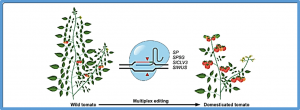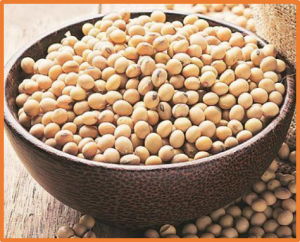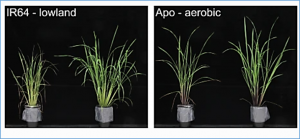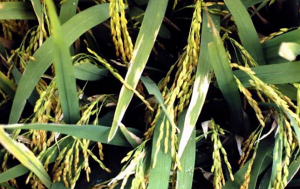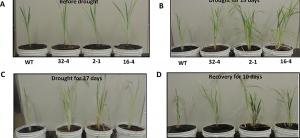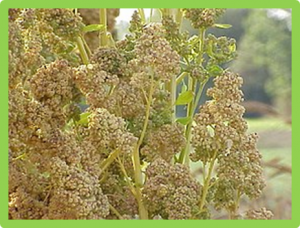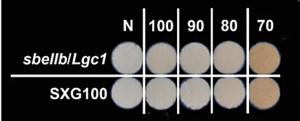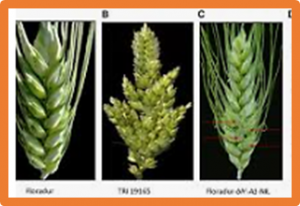Meganucleases are rare cutting enzymes that can generate DNA modifications and are part of the plant genome editing toolkit although they lack versatility. Here, we evaluated the use of two meganucleases, I-SceI and a customized meganuclease, in tomato and oilseed rape. Different strategies were explored for the use of these meganucleases. The activity of a customized and a I-SceI meganucleases was first estimated by the use of a reporter construct GFFP with the target sequences and enabled to demonstrate that both meganucleases can generate double-strand break and HDR mediated recombination in a reporter gene.
Soybean oil stability and quality are primarily determined by the relative proportions of saturated versus unsaturated fatty acids. Commodity soybean typically contains 11% palmitic acid, as the primary saturated fatty acids. Reducing palmitic acid content is the principal approach to minimize the levels of saturated fatty acids in soybean. Though high palmitic acid enhances oxidative stability of soybean oil,
Seed coat color is an important characteristic of common bean (Phaseolus vulgaris L.) associated with the marketability of dry bean cultivars, quality and nutritional characteristics of seed, as well as response to pathogens. In this study, the genetic control of seed coat color in a recombinant inbred line population (175 lines) obtained from the cross ‘TU’ × ‘Musica’ was investigated. Phenotypic segregation fitted 1:1 for white vs. nonwhite, and 3:1 for brown versus black, indicating the involvement of three independent genes, one controlling white color and two (with epistatic interaction) controlling black color.
Sugar-mediated osmotic acclimation and a strong antioxidative response reduce drought-induced biomass loss at the vegetative stage in rice. A clear understanding of the physiological and biochemical adaptations to water limitation in upland and aerobic rice can help to identify the mechanisms underlying their tolerance to low water availability. In this study, three indica rice varieties-IR64 (lowland), Apo (aerobic), and UPL Ri-7 (upland)-, that are characterized by contrasting levels of drought tolerance, were exposed to drought at the vegetative stage.
The hypersensitive response (HR) is a form of programmed cell death of plant cells occurring in the local region surrounding pathogen infection site to prevent the spread of infection by pathogens. Bax, a mammalian pro-apoptotic member of Bcl-2 family, triggers HR-like cell death when expressed in plants. However, constitutive expression of the Bax gene negatively affects plant growth and development. The Xa10 gene in rice (Oryza sativa) is an executor resistance (R) gene that confers race-specific disease resistance to Xanthomonas oryzae pv. oryzae strains harboring TAL effector gene AvrXa10.
Improvement of drought tolerance of crops is a great challenge in conditions of increasing climate change. This report describes that the silencing of the synaptotagmin-5 (OsSYT-5) gene encoding the rice Ca2+ sensing protein with a C2 domain led to a significant improvement of rice tolerance to water deficit stress. Transgenic lines with suppressed expression of the OsSYT-5 gene exhibited an enhanced photosynthetic rate but reduced stomatal conductance and transpiration during water deficit stress. The abscisic acid (ABA) content under both normal and drought conditions was elevated in the leaves of the transgenic rice as compared to the wild type.
Quinoa (Chenopodium quinoa) has been under cultivation in Latin America for more than 7500 years. Recently, quinoa has gained increasing attention due to its stress resistance and its nutritional value. We generated a novel quinoa genome assembly for the Bolivian accession CHEN125 using PacBio long-read sequencing data (assembly size 1.32 Gbp, initial N50 size 608 kbp). Next, we re-sequenced 50 quinoa accessions from Peru and Bolivia. This set of accessions differed at 4.4 million single-nucleotide variant (SNV) positions compared to CHEN125 (1.4 million SNV positions on average per accession). We show how to exploit variation in accessions that are distantly related to establish a genome-wide ordered set of contigs for guided scaffolding of a reference assembly.
A novel rice germplasm sbeIIb/Lgc1 producing grains rich in resistant starch (RS) but low in glutelin has been developed through CRISPR/Cas9-mediated targeted mutagenesis for its potential benefits to patients with diabetes and kidney diseases. In this study, a hydrothermal approach known as heat-moisture treatment (HMT) was identified as a simple and effective method in reinforcing the nutritional benefits of sbeIIb/Lgc1 rice. As a result of HMT treatment at 120 °C for 2 h, significant reductions in in vitro digestibility and enhancements in RS content were observed in sbeIIb/Lgc1 rice flour when the rice flour mass fraction was 80% and 90%.
Coffea spp. are tropical plants used for brewing beverages from roasted and grounded seeds, the favorite drink in the world. It is the most important commercial crop plant and the second most valuable international commodity after oil. Global coffee trade relies on two Coffea species: C. arabica L. (arabica coffee) comprising 60% and C. canephora (robusta) comprising the remaining 40%.Arabica coffee has lower productivity and better market price than robusta. Arabica coffee is threatened by disease (i.e., coffee leaf rust), pests [i.e., Hypothenemus hampei or coffee berry borer (CBB) and nematodes]
Wheat grain protein content (GPC) is an important quality indicator. The GPC of wheat grown in the middle and lower reaches of the Yangtze River is often low. Marker-assisted selection (MAS) is an effective tool for improving quantitative traits; however, most markers have not been effectively applied in GPC improvement except Gpc-B1, although many loci associated with GPC were identified. In this study, linkage analysis using a recombinant inbred line population from the cross of core parents of Ningmai 9 and Yangmai 158 and association mapping using the local cultivated varieties were performed and nine candidate intervals were identified.


 Curently online :
Curently online :
 Total visitors :
Total visitors :
